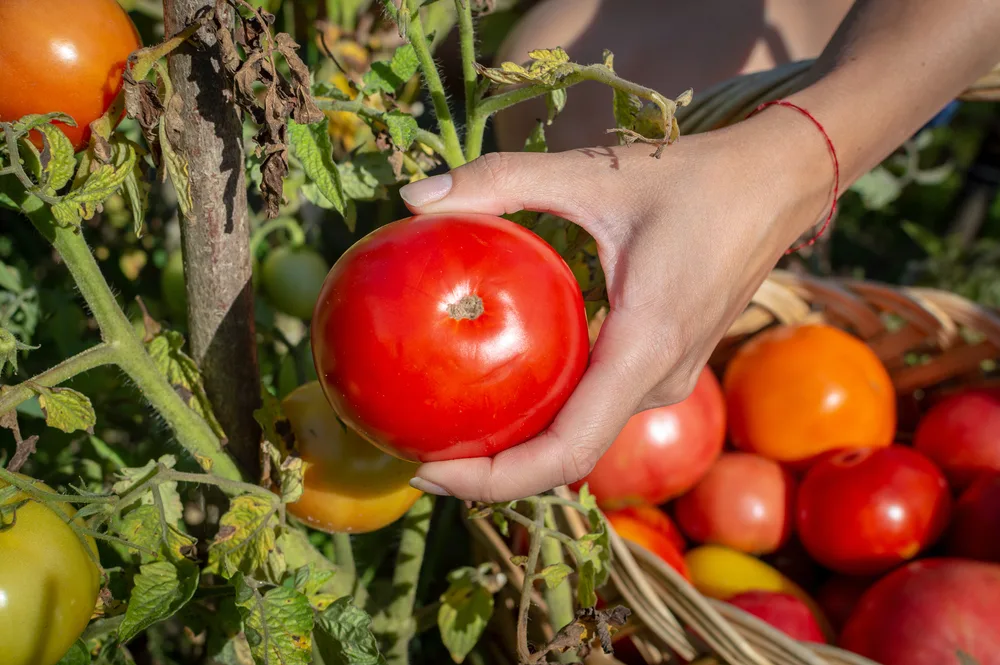
One of the profound joys of homegrown tomatoes is that we can grow a wide variety of tomato types with unique colors, flavors, shapes, and sizes.
We are no longer confined to the often bland, spherical, red toms found at the store. We can explore many varieties from the tiny to the ginormous in colors from brightest yellow to the deepest purple.
But then, once in a while, we grow a tomato that went from unique to kind of ugly.
What happened? It may be an incidence of catfacing of the tomato. Let’s find out what this is exactly and how we can learn to avoid this mis-shaped tomato event.
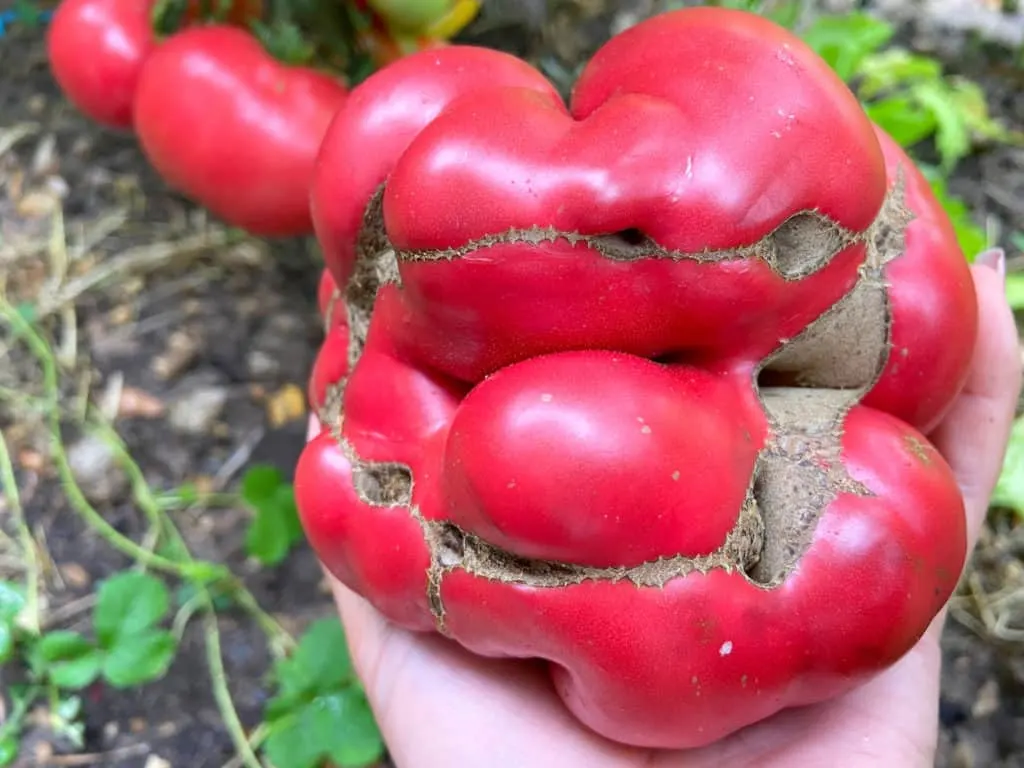
What is Catfacing?
Catfacing is different from some other fruit and flower issues that tomatoes face. When the tomato is malformed with deep indents, rough scars, puckers, uneven ripening, and sometimes delineated segments it is called catfacing.

The reasons behind catfacing still remain a bit of a mystery.
It is not the end of the world and it only effects a few tomatoes, usually. But it is often found on the largest tomatoes of the crop. You have been waiting for it, excited as it is blushing into ripeness. You go to pick it and flip it over, and sadly, it is riddled with wounds. Catastrophe!

Why is Catfacing a Problem?
Like I said, not the end of the world. A catfaced tomato is still edible. But it may have welcomed some mold, fungi, or insect pests into its weird puckers and folds, rendering it less than appetizing.
Catfaced tomatoes are challenging to process and finicky to carve, with uneven ripening, some moldy bits, and bug eaten parts. Not exactly the delicious, ripe tomato slices our mouths were watering for when we planned our tomato growing adventure!
What Types of Tomatoes Are Most Prone to Catfacing?
My understanding is that heirloom tomatoes are the most prone to catfacing. This would be true to my experience also. The larger the tomato, the greater the potential defects, so large heirlooms would be the most affected from catfacing.

Heirlooms are tomato plants that have not been hybridized or crossbred so are true to their original growth habits and forms. They are purebreds essentially. Just like in purebred animals, they may be more susceptible to growth issues or malformations.
Benefits of Growing Heirloom Tomatoes
Well, there are entire books on the subject and heirloom tomato seed catalogs to match!
With over 10,000 known heirloom tomato varieties and 3000 currently in cultivation, it is no wonder. Flavor is the major factor. Food security and keeping heirloom varieties available is of course an incredibly important one also.
But back to flavor. Many tomatoes have been hybridized or cross bred to bring out favorable attributes. These may have been focused towards creating tomatoes with excellent storage ability or being perfect for commercial processing.
Heirlooms Are All About Flavor!

Heirlooms, on the other hand, were passed down from generation to generation or community to community because of being delicious! If flavor is where it is at for you, you may want to keep heirlooms in mind when growing your tomatoes!
I have seen catfacing on a few heirloom tomato varieties that I grow, including Italian Heirloom Tomato and Andrew Rahart’s Jumbo Red Tomato. But these are still two varieties that are on my list of must-always-grow tomatoes.
How Does Catfacing Occur?
Although cultural practices and growing conditions can contribute to the extent of the catfacing, catfacing can be shown early in the bloom phase of the tomato. Every now and then a tomato blossom forms fused together.
Tomato Megabloom
Two or more tomato flowers fused together is often referred to as “tomato megabloom“.
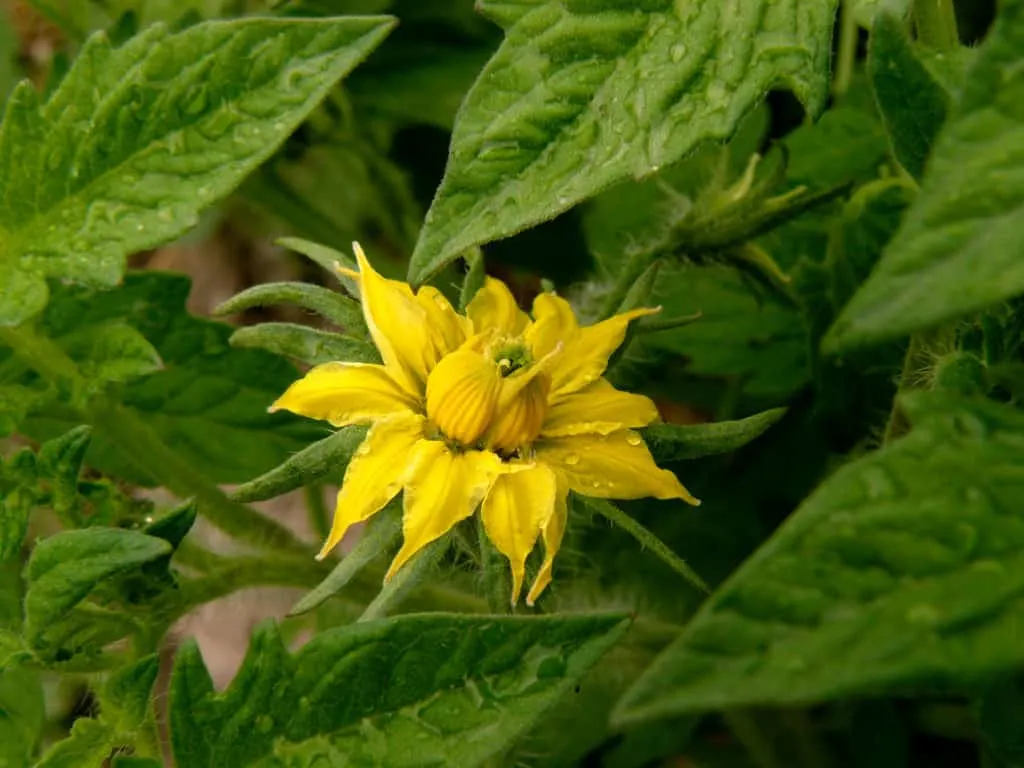

Tomato Flowers Are Unique and Interesting
Each tomato flower can pollinate itself. It needs bees, wind, (or us) just to vibrate the blossoms to allow the pollen to fall to the ovary.
Bees can add extra pollen from other tomato plants, leading to some potential cross pollination, but they are not actually vital to pollinating tomatoes. They just increase pollination with their famous buzzing. Tomato flowers have inner tubular petals encapsulating the stamens and ovaries for protecting the pollination process.
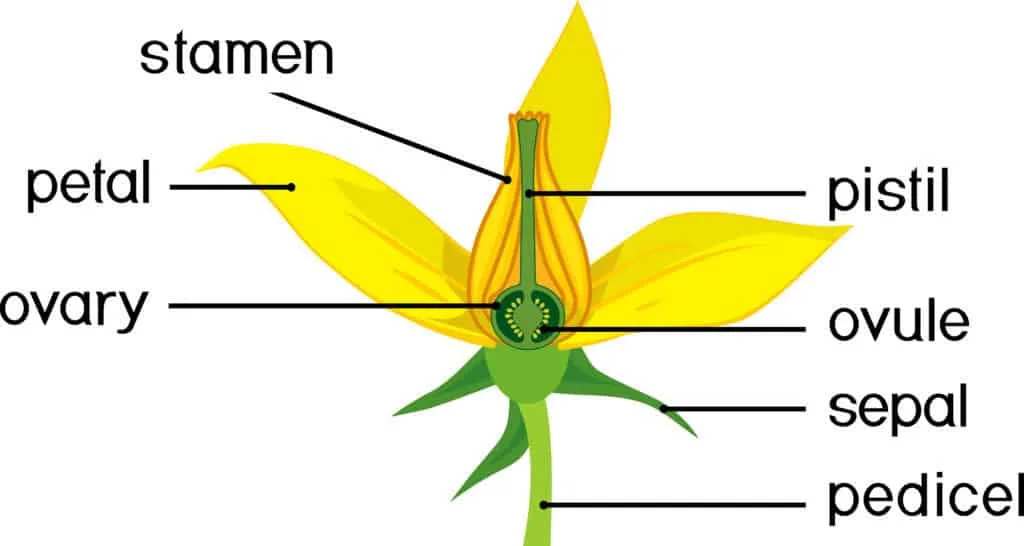
Sometimes, a tomato flower has more than one tube fused together. These result in one tomato being created from two or more fused flowers. These fused flowers become fused tomatoes, or what we call catfaced tomatoes.

The Most Important Single Trick to Avoid Catfacing
I wish I had known this trick years ago, which is why I’m sharing it with you. Remove the fused flowers (or the “Megablooms!”)
I hear you. Remove precious tomato flowers? Are you crazy! I’m not, I swear! You will thank me.
They are easy to spot once you know to look for them. They are usually the first and most terminal (at the farthest end of the flower stalk) flower of the bunch, in my experience.
Removing these flowers allows the plant to focus on making fruit from the single unfused flowers instead of putting most of its energy into the malformed fused fruit.

As a tomato grower, every few days or once a week, you’ll find yourself wandering through your tomato patch. The little chores that go along with this become a pleasure. Mine are tying up lose branches, pinching off unwanted suckers, removing any bottom or yellowing leaves, and pinching off fused flowers.
You are probably out checking on your beauties anyway. A great opportunity to share some love and attention their way.
Other Methods to Reduce Catfacing
Avoid Excessive Nitrogen
I have seen reports that say to avoid excessive nitrogen. This is a great practice anyway for tomato growing. Nitrogen will put on a lot of green, leafy growth which is great. But your tomatoes love phosphorus for roots and blooms with some potassium for strength with a little magnesium and calcium thrown in the mix.
An organic feed that is well balanced might be a great start. Well-balanced nutrition can help other blossom and fruit issues too.
Avoid Uneven Watering
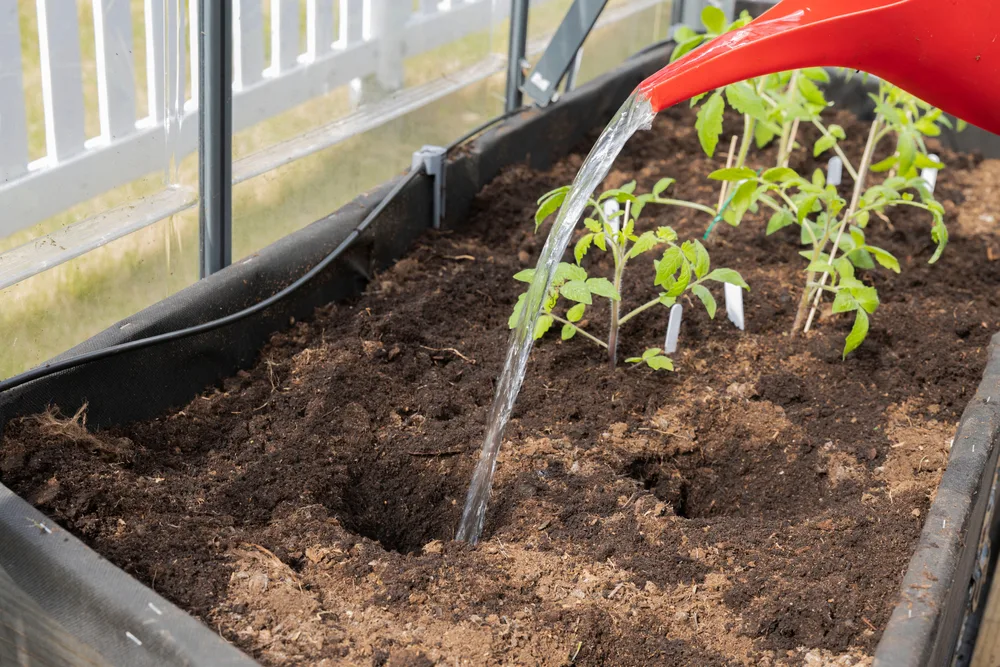
Other reports talk about avoiding uneven watering. Also, a fantastic practice. Tomatoes love consistent watering. Consistent watering can reduce fruit cracking as well as some other fruit development problems.
It May Be That Over Pruning Can Lead to Catfacing
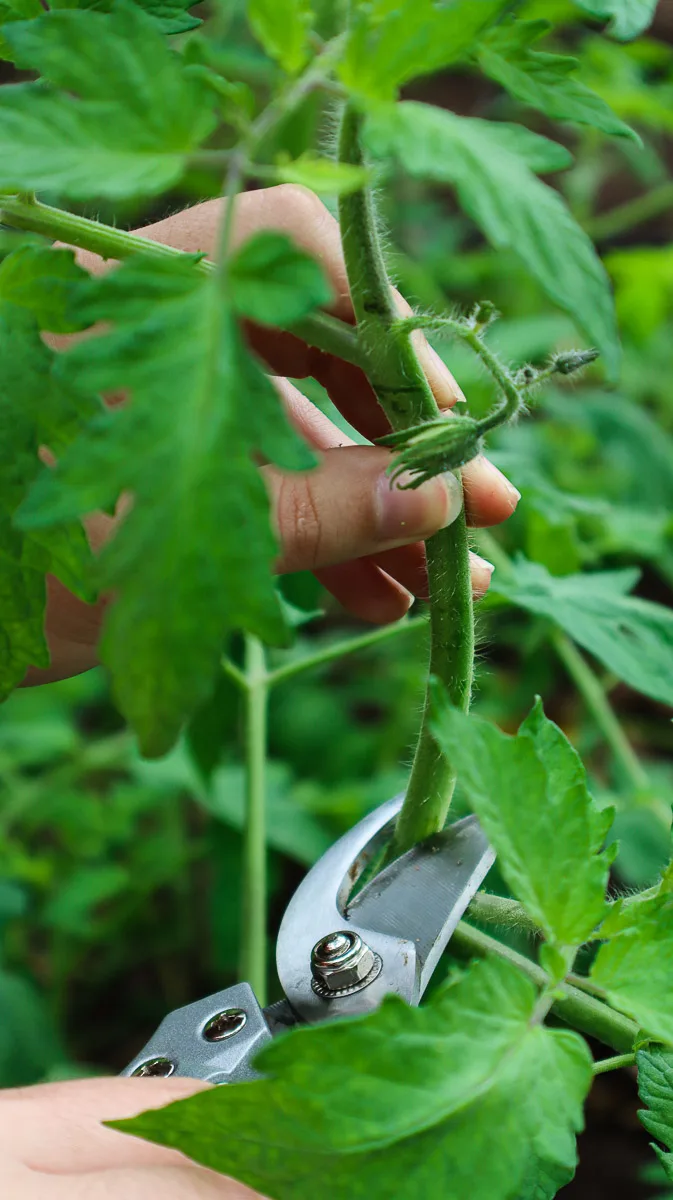
Several reports claim that over pruning can lead to catfacing. This makes a little bit of sense, just in that over pruning may reduce the number of flowers. This may make the tomato concentrate its energy on a smaller number of flowers and fruit. This may result in larger fruit which are more susceptible to catfacing, (but not if the fused flowers are removed!)
Related Reading: 5 Times You Need To Prune Your Tomato Plants
What to Do with a Catfaced Tomato
Eat it!
In my experience, it will probably be delicious. It may need to be cut apart with any damaged or overripened bits removed. It may not be the best selected tomato to save seed from as the next generation could be even more prone to catfacing.
Final Thoughts
I wish I had known about this issue many years ago! I hope that it helps you with your future tomato harvests.
Once I learned this trick, my tomato harvests have been more enjoyable. Reducing the amount of catfaced tomatoes in the harvest makes things go much smoother during processing with even more delicious tomatoes!

